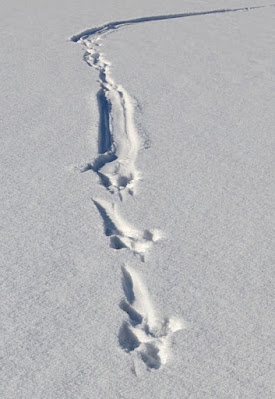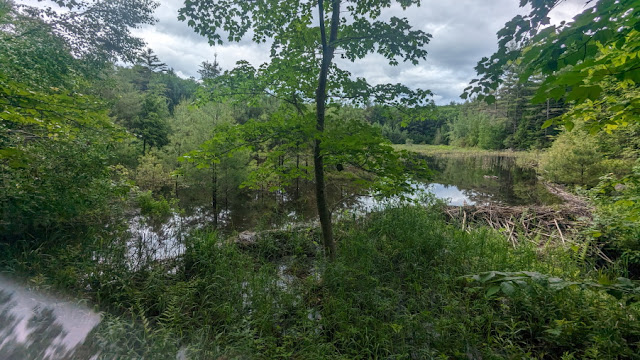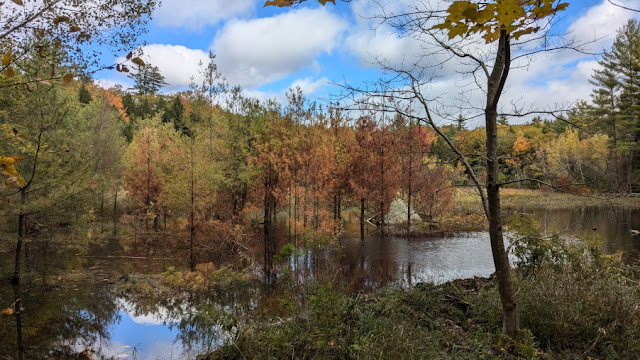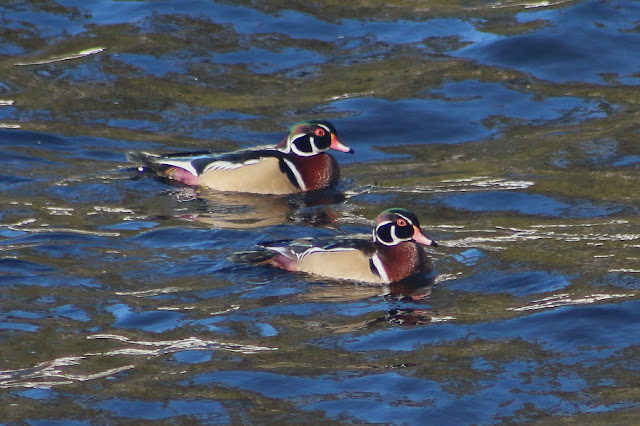Where to begin....
We'll start with Ice-In which was declared on December 27th. It's possible it actually occurred one day earlier based on how little open water was left on Christmas, but if it did, it wasn't observed, so December 27 it is. And although the surface is frozen, it is not safe. Much of the center of the lake - the parts clearly open in last week's drone video - are very thin.
 |
| Lots of open water on Monday Dec 23rd. |
But that doesn't stop otters, as they are perfectly happy to climb in and out of the water as their mood desires. The otter tracks all over the lake are really fun to see, and to imagine their behavior as they randomly run, hop, or slide their way across the lake.
 |
| Note the precise path of a canine crossing the otters' path. |
Otters on the other hand, dance all over the place, running, sliding, backtracking to tackle one of their siblings.
 |
| Otters having fun, while the pair of foxes just searched for food. |
 |
| The messy tracks of fun-loving otters. |
The jubilant play of the three brothers (totally made up on my part) went all the way from the west side of the lake, over Sheep Island, down to the outlet and across into the wetland between Wicwas and Winnisquam.
 |
| Synchronized slides by the three brothers next to Sheep Island. |
 |
| Over to Winnisquam. I didn't think to see if they ran across the road, or swam over the dam. |
 |
| Photo by Eric Cohen. |
Second, I was able to catch the Pileated Woodpecker as it made its rounds of the lake when it stopped on a tree right in my line of sight.
 |
| The red mustache indicates this is a male Pileated. |
With fresh snow, cold temperatures, and thick ice in the long-frozen coves (7 inches now), I had a couple of nice ski trips which is how I followed along behind the otters. I also saw fox, coyote, and bobcat tracks, maybe mink, and several bird tracks which were most likely left by crows.
 |
| Much too small to be turkey tracks. |
I'll end with a beautiful evening on Mt. Roberts at the Lakes Region Conservation Trust property at Castle in the Clouds. (Speaking of that, did you see that Castle in the Clouds has been designated as a National Historic Landmark by the U.S. Department of the Interior?)
I had planned to do a sunset hike on the winter solstice but the weather didn't cooperate. Friday the atmospheric conditions looked promising so I took a late afternoon hike to the summit of Roberts.
 |
| Heading up over the ledges on Mt. Roberts in the late afternoon. |
On the way down I stopped at the west facing ledge just before sunset as the fog was settling in the valleys between the mountains.
I was treated to a spectacular sunset with Kearsarge, Cardigan, and even Meredith's highest peak, Leavitt Mountain, in the distance.
 |
| Pink glow reflects off The Broads in Lake Winnipesaukee. |
I tarried long enough to see the lights come on for night skiing at Gunstock.
It's an easy hike down from that viewpoint with a headlamp, especially with the trail packed smooth with dry snow. Nonetheless, micro-spikes on boots are strongly recommended.
P.S. After writing this I received a report that there is still a small patch of open water. Depending on its size there may be an update in the ice-in date.












































